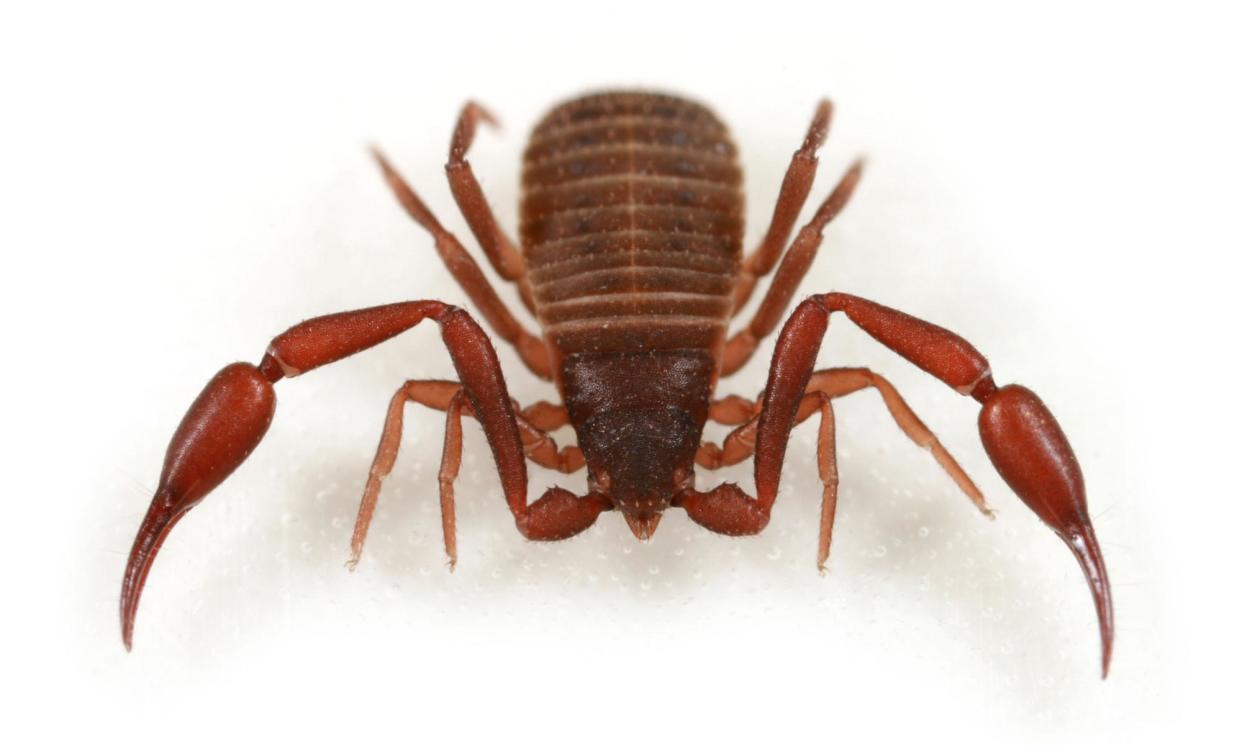Specieswatch: No sting in the tail to the pest-munching book scorpion

The book scorpion, Chelifer cancroides, is a tiny beast but it is hard to think of another creature that is such a friend to humankind. It eats book lice, ants, mites, clothes moths and bed bug larvae – pests that most people would not welcome in their homes.
Although looking like a scorpion it kills its prey with venom stored in its claws, not its tail, and is closer to a spider in origin. It has eight legs and is otherwise known as a false scorpion.
It is mostly unnoticed because it is only 2-8mm (0.08-0.31in) long and hides from the light, hunting its prey at night. The book scorpion is said to have been first spotted by the Greek philosopher Aristotle when the tiny creatures were in his library. They were chomping up the book lice that were destroying his precious volumes by eating the vegetable glue that held the pages together.
There are at least 3,300 species worldwide. They live close to human habitation among leaf litter and in our homes when there is a food supply, but are completely harmless to humans. They are in the news because scientists recently analysed their venom and realised it kills bacteria resistant to antibiotics, so perhaps in the future they will be an even greater ally.


